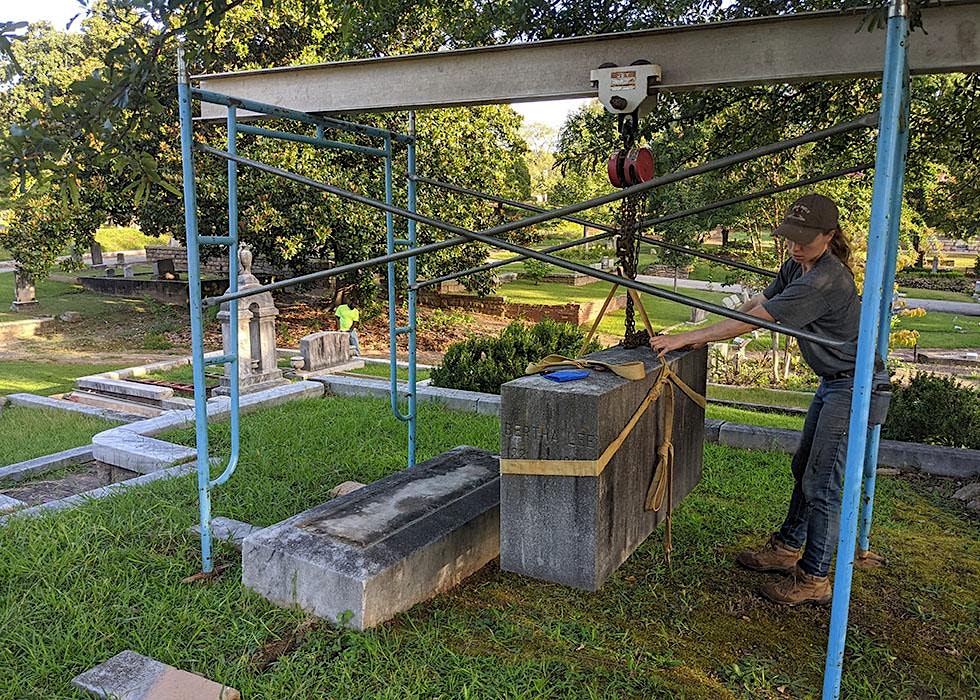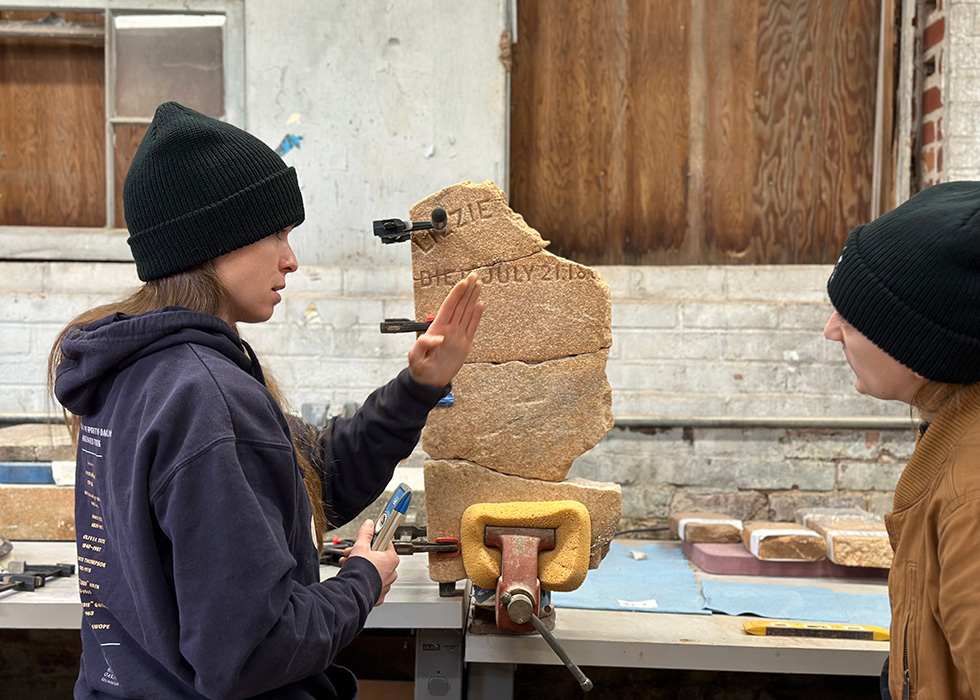
Preservation Notes: Preventing Freeze-Thaw Damage to Stone
We typically think of stone, brick, and cement as being strong, solid, and impervious, right? Not entirely. Both natural stone like marble, granite, and limestone and manufactured building materials like cinder blocks and concrete are porous. This means that these items can absorb moisture. Water absorbed into stone can carry with it detrimental elements such as nitrates, sulfates, and many kinds of acids. But today we’re just going to talk about the damage that water can do to building materials all on its own through what is known as the freeze-thaw cycle.
The freeze-thaw cycle refers to the expansion of water due to extremes in temperature fluctuation. When water goes from a liquid to a solid, it expands in volume by nearly ten percent. Depending on several factors, this expansion can cause stone and other building materials to weaken and crack.
Some building materials are more susceptible than others to the effects of the freeze-thaw cycle due to their orientation and porosity. A vertically oriented or sloped stone does not accumulate as much water as a flat one does. Likewise, water on stones in shaded locations is slower to evaporate than water on stones in sunny locations. The longer water sits on the stone, the more opportunity it has to be absorbed to a deep enough level to cause damage. A second factor that makes stones susceptible to damage from the freeze-thaw cycle is their porosity, which essentially means the amount of “open” space within the material. Stones with very low porosity don’t take in enough water to cause significant damage unless there are areas of impurity.
So, what can be done to prevent damage from the freeze-thaw cycle? Once the stones are in place at Oakland there is no way to change their orientation. However, we do have ample opportunity to prevent moisture accumulation and penetration. Three ways include planting shrubs or trees far enough away from the stones that they don’t allow the stones to stay damp, not cleaning stones if the weather will drop below freezing that day, and re-setting flat, ledger-type stones at a slight angle to help water drain off.
Image: Moisture accumulation and subsequent freezing on this concrete wall has caused the outermost layers to spall off.
Related post: Cold Weather brings Preservation Challenges



